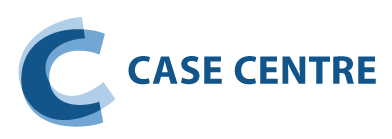


- Not connected
- |
- Login

Agrium's Ill-Fated Bid to Acquire CF Industries Holdings
Tentative d’acquisition avortée d’Agrium sur CF Industries Holdings (La)

- French,
- English
- Financial analysis,
- Mergers and acquisitions,
- Business valuation
- Fusions et acquisitions,
- Évaluation d’entreprise,
- Analyse financière
The case is set in early 2010, a few weeks after Agrium, a large fertilizer manufacturer and distributor, put an end to its attempt to acquire CF Industries Holdings, another fertilizer company. The attempt itself was initiated early in 2009, and the last offer made by Agrium was dated November 2009. The leader of Agrium’s M&A task force wants to review the doomed offer in order to determine whether a mistake was made in terms of either the valuation or deal structure, or whether the target was just unreasonably demanding. Industry and company background is provided, together with a summary of the initial offer and subsequent revisions. An Excel file and maps accompany the case. In addition to comparative financial analysis and equity valuation, this case provides the opportunity to discuss and evaluate synergy effects, acquisition premia and forms of payment.
Cette histoire prend place au début de 2010, quelques semaines après qu’Agrium, un important fabricant et distributeur d’engrais, ait retiré son offre d’achat sur CF Industries Holdings, un autre producteur d’engrais. La première offre a été faite au début de 2009 et la dernière, en novembre de la même année. La responsable du groupe de travail sur les fusions et acquisitions d’Agrium souhaite examiner l’offre d’achat avortée afin de déterminer s’il y a eu des failles dans l’évaluation ou dans le montage de la transaction, ou encore si la cible était tout simplement trop exigeante. Des détails sur le secteur et sur la société sont inclus, ainsi qu’un sommaire de l’offre initiale et des bonifications subséquentes. Des fichiers Excel et des cartes accompagnent le cas. En plus de l’analyse financière comparative et de l’évaluation des fonds propres, ce cas est une occasion d’aborder et d’évaluer les effets de synergie, les primes d’acquisition et les formes de paiement.
- Agriculture, forestry, fishing and hunting,
- Manufacturing,
- Wholesale trade
This case is above all an acquisition valuation case. It is structured so as to cover the following topics: acquisition motives and valuation of synergy effects, financial analysis and valuation of the stand-alone potential partners, determination of the transaction price/share exchange ratio and impact of legal, tax and other considerations on the deal’s structure. Its overriding concern is to make students realize that M&As are not (or should not be) “just a numbers game,” even when looked at from the point of view of a chief financial officer (CFO). Better said, M&As do involve figures, but the latter must be based on a thorough understanding of the industry and companies’ practical operational workings. Another important objective is to establish an explicit link between corporate strategy, offered price, control premium and acquisition-derived advantages. A secondary pedagogical objective is to hone students’ skills at financial analysis, in particular comparative financial analysis. Finally, it is possible to emphasize, and illustrate, that if an acquisition is indeed an investment project to be valued in the same way as all other projects (through NPV computation, for example), it is also more complex; legal, fiscal and financing considerations are usually more involved and must be taken into careful consideration when packaging an offer.
Ce cas est avant tout un cas d’évaluation d’une acquisition. Il est structuré de façon à couvrir les sujets suivants : motifs d’acquisition et évaluation des effets de synergie, analyse financière et évaluation de partenaires potentiels autonomes, détermination du prix de la transaction et du ratio d’échange des actions et considérations juridiques, fiscales et autres pour le montage de la transaction. Son but premier est d’amener les étudiants à réaliser que les fusions et acquisitions ne sont pas (ou ne devraient pas être) « une simple affaire de chiffres », même lorsqu’elles sont abordées du point de vue d’un chef des finances. Autrement dit, outre les chiffres, les fusions et acquisitions exigent une bonne compréhension du fonctionnement pratique du secteur et des sociétés. Un autre objectif important consiste à établir un lien explicite entre la stratégie de la société, le prix offert, la prime de contrôle et les avantages découlant de l’acquisition. Un objectif pédagogique secondaire est de permettre aux étudiants d’améliorer leurs aptitudes pour l’analyse financière, en particulier l’analyse financière comparative. Enfin, on peut aussi faire ressortir et illustrer le fait que même si une acquisition est un projet d’investissement qui doit être évalué comme n’importe quel autre projet (au moyen du calcul de la VAN, par exemple), le niveau de complexité est plus grand dans la mesure où les aspects juridiques, fiscaux et financiers sont habituellement plus importants et doivent être soigneusement considérés au moment du montage de l’offre.


